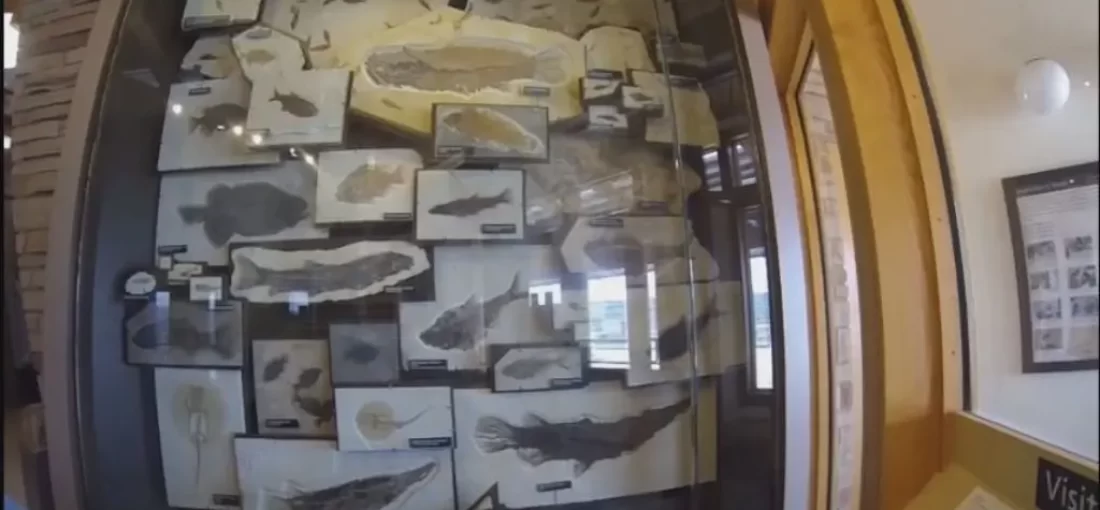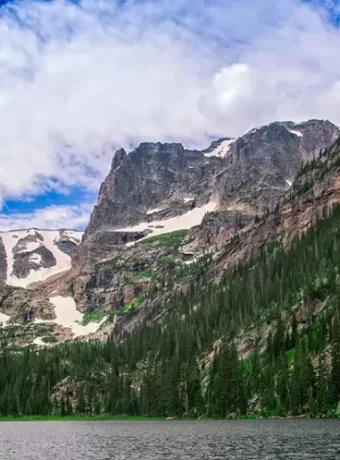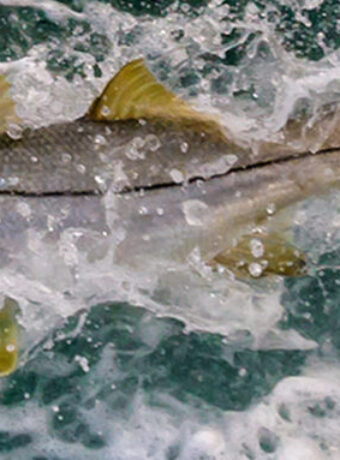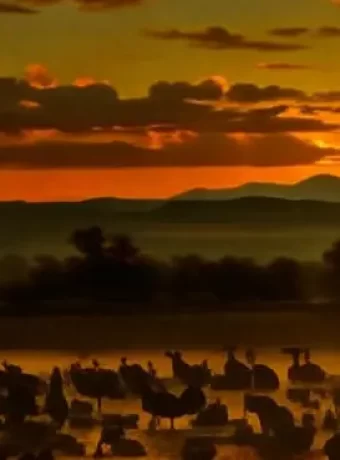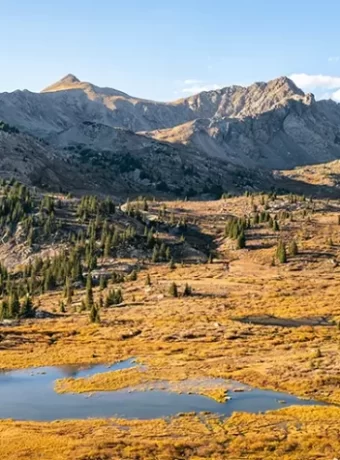Explore Fossil Butte National Monument: A Timeless Adventure
Fossil Butte National Monument, almost missed this one. Driving in the middle of no where Wyoming and a sign came into view. Fossil Butte National Monument? Never heard of it before, so let’s stop, why not. This place is worth driving out of your way to visit.
Key Points
- Fossil Butte National Monument, located 15 miles west of
Kemmerer, Wyoming, was established in 1972 to protect Eocene Epoch fossils from
the Green River Formation, dating back 50 million years. - The monument preserves fossils of fish, alligators, bats,
turtles, small horses, insects, and plants, offering insights into a
subtropical ancient ecosystem. - The surrounding area, including Kemmerer, has a history tied
to coal mining and the railroad, with Kemmerer founded in 1897 and known for
the first J.C. Penney store. - Research suggests the Green River Formation’s
varved sediments provide a detailed record of climate and ecological changes
over millions of years
Table of Contents
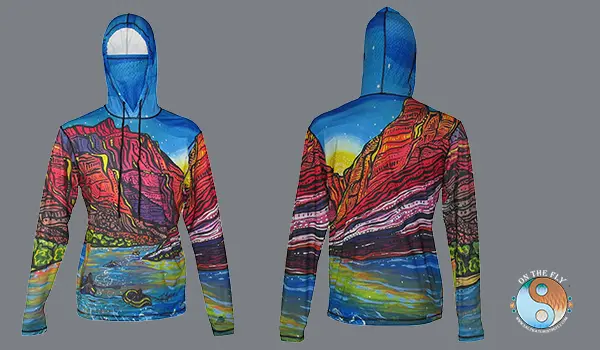
Fossil Butte is a great must stop, but Spring Through Fall are the best. Having visited several times Spring and Fall are my favorites. Days are warm with cool morning. Dress in Layers with out Sun Protective Graphic Hoodies as a base layer when cool and a UPF-50 outer layer in the intense sun with a sewn in facemask. For a great outer layer our Hydrophobic Heavy Weight Graphic Hoodie. It’s quarter zip with pockets and a sewn in facemask as well.
Exploring Fossil Butte National Monument
Fossil Butte National Monument is a fascinating site in southwestern Wyoming, located 15 miles west of Kemmerer. Established on October 23, 1972, it protects a rich collection of fossils from the Eocene Epoch, around 50 million years ago, within the Green River Formation. This monument is not just a scenic spot but a window into ancient life, showcasing well-preserved fossils of fish, alligators, bats, turtles, small horses, insects, and plants. These fossils reveal a subtropical freshwater basin that once existed in what is now a cold sagebrush desert.
The surrounding area, particularly Kemmerer, has its own historical significance, rooted in coal mining and railroad development. This article will explore the geological and paleontological history of the monument, its human history, and the context of the surrounding region, providing a comprehensive look at this unique site. These aren’t just any fossils; they are some of the best-preserved fossils in the world.
These preserved fossils tell stories of a time when this area was a lush, subtropical freshwater lake. It’s a journey to discover fossils and understand ancient environments.
Geological and Paleontological Insights
The Green River Formation, where Fossil Butte is located, formed during the Eocene Epoch as intermountain lakes filled with sediment. These lakes, including Fossil Lake, Lake Gosiute, and Lake Uinta, created varved sediments—annual layers of dark and light deposits—that record six million years of environmental history. The calm waters and fine sediment of Fossil Lake, with minimal scavengers, led to exceptional fossil preservation, making it one of the richest fossil sites globally.
Fossils at the monument include over 20 fish species, reptiles like alligators and turtles, birds such as parrots, and mammals like early bats and dog-sized horses. Insects and plants, including palms and ferns, are also preserved, painting a picture of a diverse subtropical ecosystem. This preservation allows scientists to study ancient climate changes and ecological interactions, offering unexpected details about how these organisms lived and interacted millions of years ago.
Green River Formation
The Green River Formation spans across Wyoming, Utah, and Colorado. It is known for its varved sediments, natural wonders and allows to discover fossils from a very important time. These layers provide a detailed record of environmental changes over six million years. Think of them as nature’s history book.
During the Eocene Epoch, the Rocky Mountains were uplifting. This process created intermountain basins that filled with water. Three major lakes formed: Fossil Lake, Lake Gosiute, and Lake Uinta.
Fossil Lake was the smallest. The calm waters, lack of scavengers, and fine sediment made perfect conditions for fossilization. Because of this Fossil Butte is a Lagerstätte—a sedimentary rock unit with extraordinary fossil content.
The sediments in Fossil Lake were composed of laminated limestone, mudstone, and volcanic ash. Each varve, or layer, represents one year of deposition. Scientists analyze the layers to understand climate and ecological changes of the river lake.
Vacation in Montana
A great adventure is just down the road. Great fly fishing in Iceland, Baja California, or just an awesome Montana Adventure.
A Glimpse into the Past: Fossils of Fossil Butte National Monument
What kind of creatures roamed this ancient landscape? The fossil record at Fossil Butte National Monument is incredibly diverse. It paints a picture of a thriving ecosystem of the Eocene fossil lake.
- Fish: Over 20 species of fish fossils have been found. Knightia is among these fossils.
- Reptiles: Alligators, turtles, snakes, and lizards once lived here. These fossils indicate a warmer climate.
- Birds: Parrots and other bird species have been identified in the fossil record. This diversity adds to the picture of a subtropical environment.
- Mammals: Even early bats and small horses like Hyracotherium have been discovered. The fossils are incredibly detailed.
- Insects and Plants: Dragonflies, beetles, palms, and ferns are all part of the fossil record. These plant fossils further prove the warm, wet climate that once existed.
The exceptional preservation even allows for the study of soft tissues like skin and feathers. You can see how predator-prey relationships played out. This level of detail is rare and valuable to scientists.
Fossil Butte National Monument: More Than Just Fossils
Fossil Butte National Monument is just 15 miles from Kemmerer, Wyoming. Coal mining and railroad construction have shaped the area. This part of the country has a colorful story that is rich and diverse.
The Human Story
The human history of Fossil Butte began with coal mining. In 1843, explorer John C. Frémont discovered coal in the area. Later, in 1881, the Union Pacific Coal Company opened the first underground mine.
The town of Kemmerer was founded in 1897 by Patrick Quealy. He named it after financier Mahlon Kemmerer. Miners in the area soon began discovering fossils.
One early collector, Lee Craig, sold fossils from 1897 to 1937. These fossils were sold commercially, highlighting the paleontological value of the area. Eventually, scientists recognized the need to protect the area and the national monument protects all that is inside.
In 1972, Congress designated Fossil Butte a national monument. It was created to protect “outstanding paleontological sites and related geological phenomena.” A visitor center was also established to educate the public.
Inside, find over 300 fossils and interactive exhibits. Visitors to the national park unit get a sense of this amazing place.
The Town of Kemmerer
Kemmerer itself has a unique history. It was founded as an independent town, unlike many company towns. Individuals could buy land for coal and livestock ventures.
The town is also famous for being home to the first J.C. Penney store. James Cash Penney opened this store in 1902. From that beginning, a national chain emerged.
If you head into town, make sure you check out the J.C. Penney Company. It is a great opportunity to delve into the local history.
For decades the Kemmerer Coal Company was an energy sector. By 1950, the Kemmerer Coal Company was the world’s largest open pit mine.
Planning Your Visit to Fossil Butte National Monument
Want to visit and see the fossils for yourself? Make sure to swing by the Fossil Butte National Monument Visitor Center when planning your trip. Keep in mind you cannot commercially collect fossils within the monument.
If you plan on visiting Kemmerer, make sure you stay connected to the park service, as there is even great views around every corner. The Bear River area can provide beautiful views as well, but be careful around it.
Fossil Butte National Monument is an incredible destination. It provides a unique experience.
Things to Do at Fossil Butte
There are many activities to consider while exploring the area and taking advantage of all it has to offer. From trails to museums, visitors have many things to keep themselves occupied with while they visit fossil butte.
- Visit the Visitor Center: Explore exhibits with over 300 fossils. Learn about the geology and paleontology of the region.
- Hike the Nature Trail: Take a short hike to see the landscape and learn about local flora and fauna.
- Scenic Drive: Enjoy the views along the mile scenic drive through the monument. Make sure to use caution for the Bear River formation.
- Attend a Ranger Program: Participate in guided tours or talks. These are led by park rangers who share their expertise.
- Junior Ranger Program: Kids can complete activities. Then they receive a Junior Ranger badge.
- Have a Picnic: Enjoy a meal at the picnic area with beautiful views of the surrounding area.
No matter what you enjoy doing there is something for you. Enjoy some incredible learning while there. And remember, the monument protects this wonderful land that can never be replaced.
Preservation and Research at Fossil Butte National Monument
Protecting fossils and the paleontological sites is key. It is through preservation efforts that help better improve understanding for research. Ulrich’s Fossil Gallery, a park that enables protection from damage, helps this all come together.
Since commercial fossil collecting is not permitted. All areas that provide these parks, sign show appreciation and guidance. Always be safe around quarries when seeking trail fossil butte protection as safety is their number one goal.
Evolving Discoveries and Significance
Each one the specimens and all those associated play roles in a delicate balance in this significant site of history. The national monument protects an area where discoveries over the years and what they’ve unearthed gives us great understanding. Because of these areas and specimens we can have a better sense of discovery.
Because of that reason Fossil Butte National Monument allows us to reflect on changes to climates to environmental surroundings from years and years of discovery. This provides insight into the freshwater lake that existed in the past.
Frequently Asked Questions (FAQs) about Fossil Butte National Monument
Is Fossil Butte worth visiting?
Yes. Fossil Butte National Monument provides a unique opportunity to see incredibly well-preserved fossils. You can learn about an ancient ecosystem and enjoy beautiful scenery.
Can you dig for fossils at Fossil Butte?
Commercial fossil collecting is not allowed within the national monument. However, some private quarries nearby may offer opportunities for fossil digging.
How old are the fossils in Kemmerer, Wyoming?
The fossils at Fossil Butte National Monument date back to the Eocene Epoch. So, they are approximately 50 million years old. The best-preserved fossils are found in this area.
What is the history of the Fossil Butte National Monument?
Fossil Butte National Monument was established in 1972. It was established to protect the rich fossil deposits of the Green River Formation. Coal mining activities in the late 19th century led to the initial discovery of fossils, allowing visitors to discover fossils.
Conclusion of Fossil Butte National Monument
Fossil Butte National Monument is truly a special place. It offers a glimpse into a world long gone. With its remarkably preserved fossils and unique geological history, it has some of the best-preserved fossils for all to see.
Visiting Fossil Butte National Monument lets you experience a time capsule and explore the amazing diversity of life. It is also an opportunity to better understand the history of earth. As you plan your next adventure, remember that the park service protects this ancient national monument.
If you love this place, remember to help sign the national park foundation sign, too. Consider learning more about the national park foundation.
